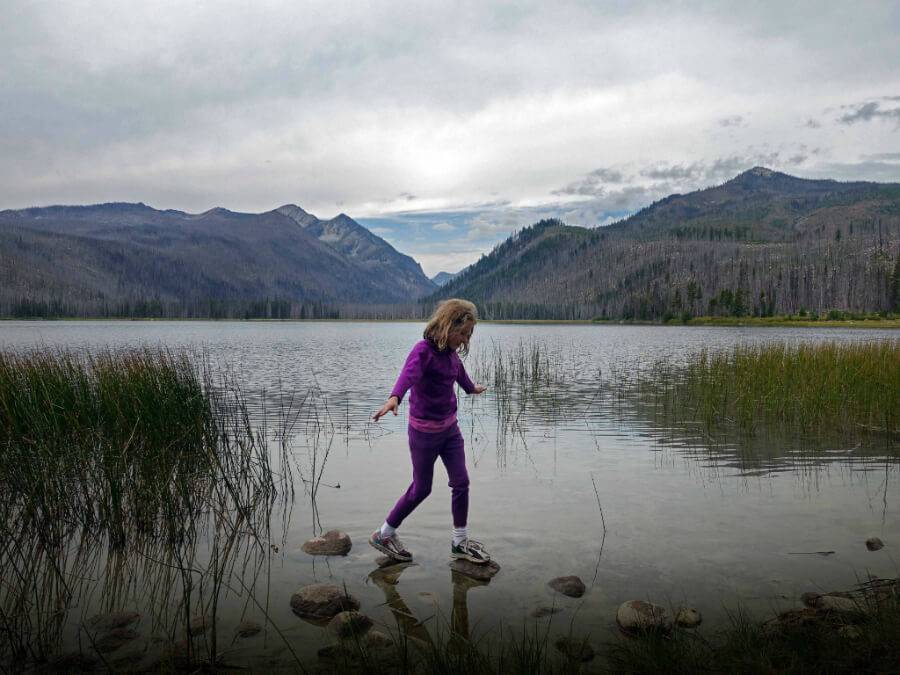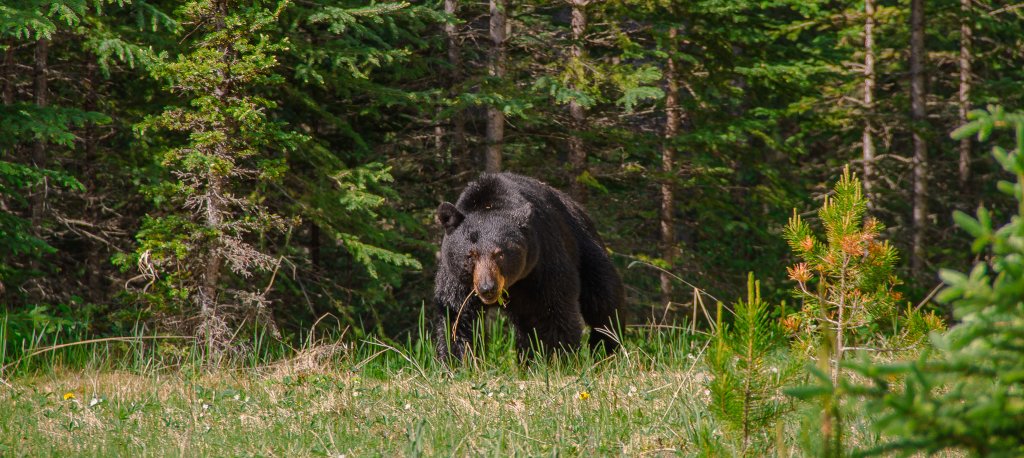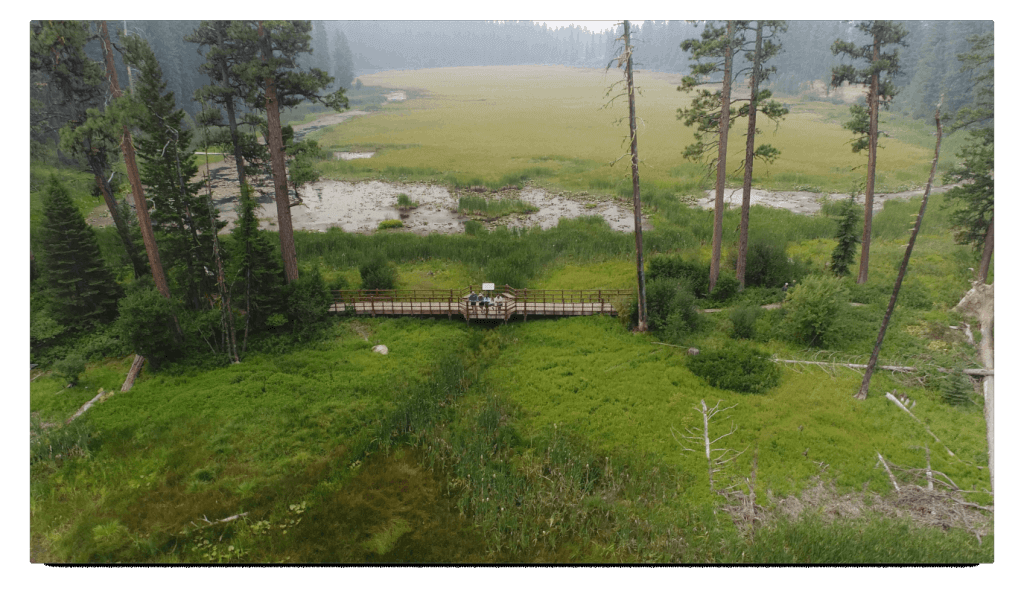This is a sponsored post.
A family’s first backpacking trip is an Idaho rite of passage. Perhaps no other kind of trip can test your bushcraft, parenting skills and a child’s patience, all within a 24-hour window. But perhaps no other location can pull it all together like a trip into Idaho’s Loon Lake.
Like a liquid jewel cast deep into the gem state, Loon Lake’s shimmering water sits nestled 40-miles north of McCall in the Payette National Forest. With reasonable proximity to the mountain town, it has ample access to supplies but perches on the edge of the modern world before it slips into the void of The Frank Church Wilderness.
Boasting a 10+ mile hike, spectacular scenery, the quaint mountain lake is punctuated with a long abandoned ghost plane stashed at the leeward shore. Its got all the makings for a winning trip. Armed with a cue sheet of stats, a handful of stories, and a pack crammed with backcountry accouterments, I recently brought my own family to Loon Lake for our first backpacking trip.
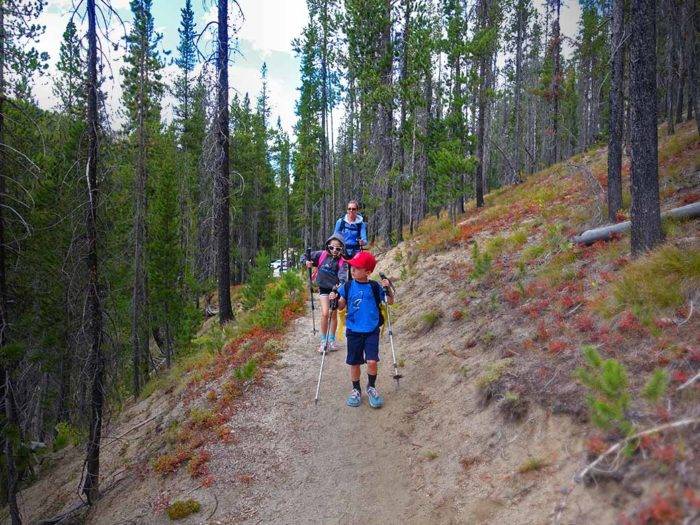
The 3-hour drive to the trailhead is more-or-less a direct route. Warren Wagon Road peels north just outside McCall, rolling for 30 or so miles before pavement turns to gravel. It’s another six miles on buffed gravel to the well-marked sign to the Chinook Trailhead and another mile to the Loon Lake trailhead proper.
Perhaps the crux of the trip is finding a spot to park. Loon Lake, being an easy drive from McCall, is prized by McCall-based day-trippers. Driving up from Boise, we found the last spot at the upper lot, pulled our gear out of the rig and strapped the kids with their school daypacks filled with clothing for the night.
Two trails immediately fork at the trailhead; both will take you to Loon. The left trail (#080, Secesh River Trail) is 6-miles long and casually follows the cascading Secesh River for 4-miles before it crosses a bridge and climbs stoutly up trail #084 out of the river basin to Loon Lake.
The right trail (#081, Loon Lake trail) crosses the bridge seen from the parking lot and climbs almost directly to a sustained roll for 5 miles to the lake.
To keep it interesting, we made our trip a loop, walking in along the Secesh River Trail and out the Loon Lake Trail.
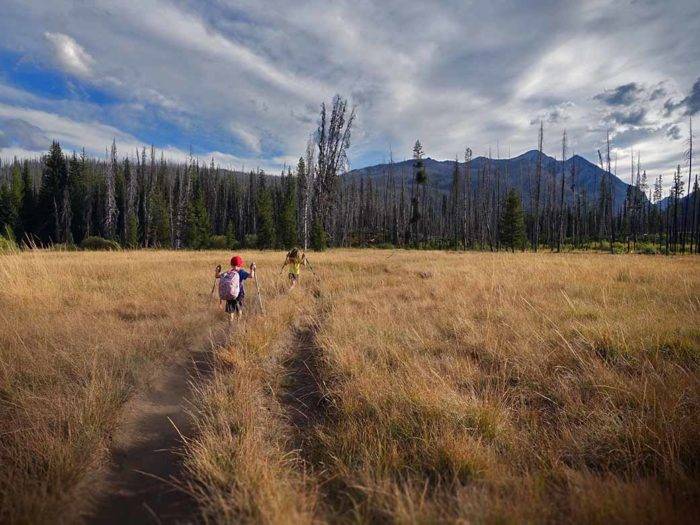
A six-mile hike with a pack is no small chore for a child. Fortunately, the Secesh River Trail sports spectacular views (and modern day technology is quick to answer “are we there yet…how much longer”?). To help ease the burden, the kids traded a pack after each passing mile. I played the role of Sherpa-dad and strapped the extra pack to my own.
Three hours later, trail #084 joined #081. A quarter-mile hike along a dusty trail cut deep into the grassy meadow led us to the lake proper, where the trail forked once again.
Trail #081 continues left and leads to a formal camp spot tucked in the woods. A faint trail ducks out of the camp to the right, dropping hikers towards the lake where a string of primitive camp spots are scattered along the berm adjacent to the lake.
Fork right and trail #084 brings hikers to the south side of the lake where additional primitive camping spots sit along the south shore, close to the abandoned B-23 bomber.
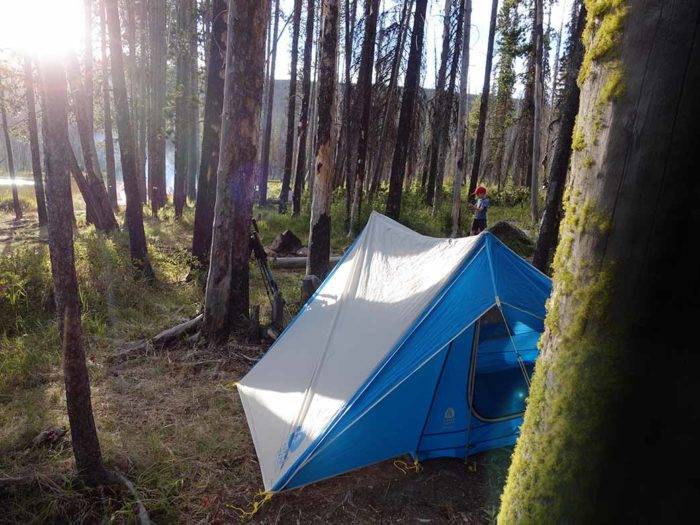
An Idaho classic, don’t expect the lake to be all for yourself. We found an idyllic spot on the north shore of the lake nestled between a small stand of pines and a half dozen other tents. There are no vaulted toilets and water needs to be purified from either the lake or the stream. After all, you’re backpacking.
The kids unshouldered their loads and got busy playing while my wife and I set up camp and got dinner started. We collected wood for a fire, followed by s’mores and stories about the bomber we’d see the following morning.
Morning came early and I got busy building a fire to greet the sleepy clan. Oatmeal and Pop-tarts heated on fire-side stone were the soup du jour. But the kids didn’t care. They were recharged and ready to make the trek around the lake to the abandoned bomber buried in the trees on the south shore.

At the outset of World War II, the government commissioned the production of the twin-engine plane. The production run was short-lived and the B-23 was replaced with bigger and better.
B-23’s continued to be used for training, though. In January of 1943, one such bomber was returning from a mission in Nevada when a storm caused heavy icing and forced the pilot to make an emergency landing on Loon Lake’s frozen surface. Despite hurdling through 150 feet of forested timber, only one man was injured. After sitting tight for five days, waiting for a rescue, a three-man team made a 40-mile trek through deep snow to find help, surviving for 14 days on woodpeckers, a squirrel and a few squares of chocolate. Miraculously, nearly a month later, everyone had been rescued.
Two options can get you to the remains of the plane. Hikers can follow the established trail #084 for about 1.5 miles along the west side (on the right of the lake). On the south side camp, follow a path through the deep grass and cross Loon Creek over a stack of felled logs that bridge the creek to the abandoned bomber.
The other option is to follow an unmanaged footpath along the eastern shore. The trail is faint, boggy, and littered with timber that has fallen over the years. The route is direct and the distance is shorter, but the going is rougher. Small kids will need an occasional hoist and wet feet are a real possibility.
With heightened anticipation, our troop made quick work of trail #084. Worn from decades of sun, I spied the abandoned fuselage reflecting brightly through the trees, a shining beacon marking our destination. Sitting perhaps 100-150 feet from shore, the plane’s wings were sheared from the body as it shuttled through the trees. Crumpled aluminum indicated where trees had slowed the plane to its final resting place.
The kids curiously crawled around the debris, imagining what cargo the plane might have been carrying, spying the twin-engines, and debating what it might have been like to live in the plane for 21 days in winter.
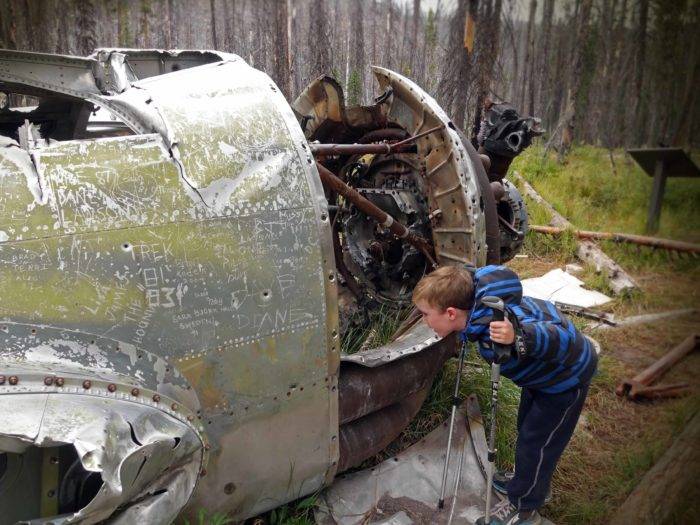
We followed the bushwhack trail out the east side, past more debris and eventually around the lake back towards camp where we started breaking camp.
My daughter, a budding herpetologist, pulled a fist out of the brush with a red racer coiled in her hand and peeped “can we go to Burgdorf on the way out?”
The turn-of-the-century ghost town sits 8-miles down the road and boasts one of Idaho’s best hot spring destinations. It’s a fantastic way to wrap a fine weekend at Loon Lake. We used it as leverage, horse trading it for an expedited extraction back to the rig.
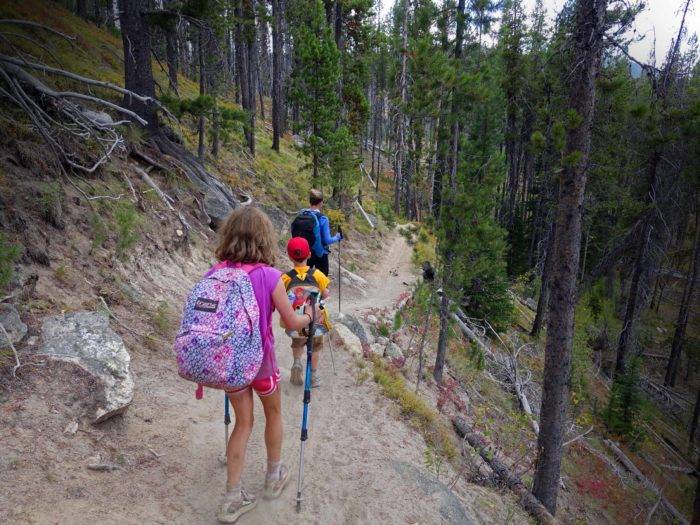
Inspired by the hike in, each child asked to carry their own pack on the way out, which I whole-heartedly supported. The clouds began closing in, hinting at summer’s end. And just as we got to the car, the skies unleashed, confirming we indeed had perhaps the best of luck and a perfect first-time backpacking experience.
Do It Now
With a little planning, Loon Lake can be done in a weekend. We left our Boise house on Saturday morning, got to the trailhead by 3 P.M. and were at camp by 6 P.M. We left the following afternoon at 2 P.M. and were back home by 7 P.M.
As a parent, you play the role of expedition leader, entertainment coordinator, camp chef, storyteller, marketing and human relations. To foster enthusiasm for backpacking (and a potential future trip), make it easy. Don’t overburden your kids. Let them choose how much they want to schlep in but be prepared to carry the rest. In fact, be prepared to carry it all.
Backpacking rarely means vaulted toilets or sweet water springs drawn from a hand pump. Be prepared to dig a cathole no less than 200 feet from camp and any water source. Bring a means to purify water. We brought in a lot of drinking water in bladders, but also boiled water for meals.
Bring food that is familiar to your child and let them participate in meal planning. A few days before our trip, we went shopping as a family to pick our food.
Loon Lake is an alpine adventure and kids get cold fast. Even in summer, bring warm jackets, gloves, and a warm sleeping bag and pad.
Bonus points: Burgdorf is 7 miles down the road from the trailhead and another mile down the gravel strip where the pavement and gravel meet. It’s $8 per adult, $5 per child and well worth the visit.
All photos, including feature image, are credited to Steve Graepel.
Artist, writer, adventurer, father of two, Steve Graepel is in constant pursuit of the balanced life. Living in Idaho, he can pursue it with gusto. Steve’s work has appeared in National Geographic Adventure, Patagonia’s The Cleanest Line and Gearjunkie.com.
Steve and his wife Kelly live in Boise, Idaho with their two children, Chloe and Ethan.
Published on October 4, 2016

